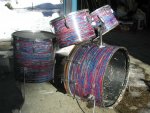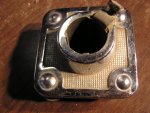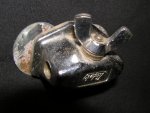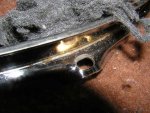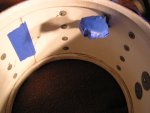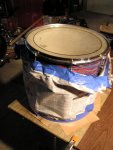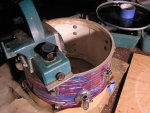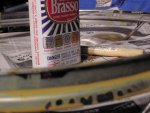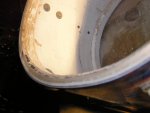intheruff
Senior Member
Hi all
I'm restoring my avitar. I bot these Luds in downtown SF back in 1968. The Psychodelic Red just reached out to me when walking by the music stores display window and seemed to say, "I'm yours, come get me". I didn't play but felt the stirring deep inside. Hendrix w/MM was new to the scene and this stuff sounded so much better then the surf and soul music I grew up with. Well, as things go, I bot em' and played the holy crap out them until the late seventies, when they were replaced by an eight piece set of Tama Imperial Stars.
The poor ol' Luds then took second seat and were soon all but abandoned out in the cold shop where they did their best to gather together all the spiders, bee's nests, mice turds, dirt, dust, and yes... some rust, this mountain where they reside has to offer. Very sad, indeed.
Because of the inspiration bestowed my way by so many of you, especially Elvis and Harry Conway, I've decided to tackle the restoration of these old friends. Now, because these drums seem a part of my life and part of the many great memories associated with the fine bands and great venues where they've been played, I've decided NOT to replace those battered and worn parts and pieces that seem an intragal part the drums past. At least that's the way I see it. Wierd, I know, but they'll never again be new, so why fake it? No botox for this cowboy. They are what they are!
As you may notice from the avitar, I removed the resonant heads to get the NOW sound of the times. Because of doin this the interior shells got beat up pretty bad and now need to be sanded and repainted. However, the date stamps inside will be masked so as not to cover them over with paint. And, because those bottom heads were removed the floor tom, and to a lesser degree the base drum, has gotten' somewhat out of round. Opps! I suppose this will present a challenge with regards to tuning. Life ain't perfect.
The next steps will be to paint the interior (cream white) and stain the base drum hoops black where the plastic is not. If anyone has a comment or recommendation as to products to use or methods to be aware of, please feel free to comment.
I'll post more pics as the project developes and confident the pics and comments I'm posting are actually what I think they are. lol...
The first pic (I think) is the project. The second shows some of the extreme abuse and wear these suckers have suffered over the years. The third a dismantled base drum being sanded for eventual paint.
I'm restoring my avitar. I bot these Luds in downtown SF back in 1968. The Psychodelic Red just reached out to me when walking by the music stores display window and seemed to say, "I'm yours, come get me". I didn't play but felt the stirring deep inside. Hendrix w/MM was new to the scene and this stuff sounded so much better then the surf and soul music I grew up with. Well, as things go, I bot em' and played the holy crap out them until the late seventies, when they were replaced by an eight piece set of Tama Imperial Stars.
The poor ol' Luds then took second seat and were soon all but abandoned out in the cold shop where they did their best to gather together all the spiders, bee's nests, mice turds, dirt, dust, and yes... some rust, this mountain where they reside has to offer. Very sad, indeed.
Because of the inspiration bestowed my way by so many of you, especially Elvis and Harry Conway, I've decided to tackle the restoration of these old friends. Now, because these drums seem a part of my life and part of the many great memories associated with the fine bands and great venues where they've been played, I've decided NOT to replace those battered and worn parts and pieces that seem an intragal part the drums past. At least that's the way I see it. Wierd, I know, but they'll never again be new, so why fake it? No botox for this cowboy. They are what they are!
As you may notice from the avitar, I removed the resonant heads to get the NOW sound of the times. Because of doin this the interior shells got beat up pretty bad and now need to be sanded and repainted. However, the date stamps inside will be masked so as not to cover them over with paint. And, because those bottom heads were removed the floor tom, and to a lesser degree the base drum, has gotten' somewhat out of round. Opps! I suppose this will present a challenge with regards to tuning. Life ain't perfect.
The next steps will be to paint the interior (cream white) and stain the base drum hoops black where the plastic is not. If anyone has a comment or recommendation as to products to use or methods to be aware of, please feel free to comment.
I'll post more pics as the project developes and confident the pics and comments I'm posting are actually what I think they are. lol...
The first pic (I think) is the project. The second shows some of the extreme abuse and wear these suckers have suffered over the years. The third a dismantled base drum being sanded for eventual paint.


